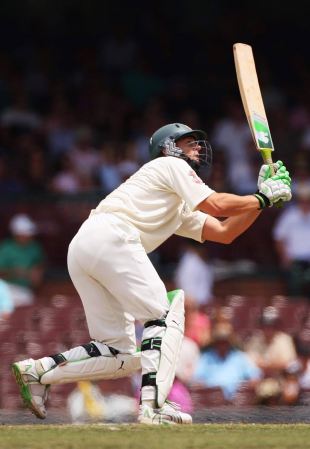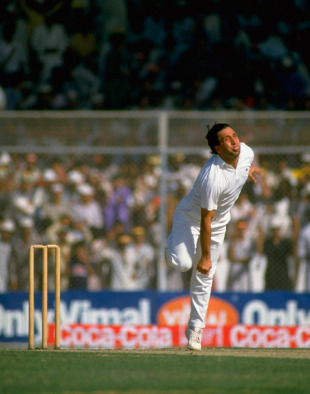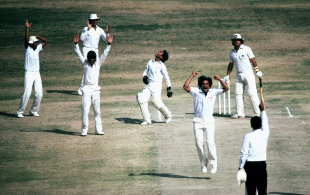By Spengler
The "founders of modern science", writes David Curzon in Jewish Ideas Daily [1] of October 18, "were all believers in the truths of the opening chapter in the Hebrew Bible. The belief implicit in Genesis, that nature was created by a law-giving God and so must be governed by "laws of nature," played a necessary role in the emergence of modern science in 17th-century Europe. Equally necessary was the belief that human beings are made in the image of God and, as a consequence, can understand these "laws of nature."
Curzon argues that the modern idea of "laws of nature" stems from the Bible rather than classical Greece, for "ancient Greeks certainly believed that nature was intelligible and that its regularities could be made explicit. But Greek gods such as Zeus were not understood to have created the processes of nature; therefore, they could not have given the laws governing these processes."
Is this just a matter of semantics? Is there a difference between the "Greek" concept of intelligibility, and what Curzon calls the biblical concept of laws of nature? After all, the achievements of Greek science remain a monument to the human spirit. The Greek geometer Eratosthenesin the third century BCE calculated the tilt of the earth's axis, the circumference of the earth, and (possibly) the earth's distance from the sun. Archimedes used converging infinite series to calculate the area of conic sections, approximating the calculus that Newton and Leibniz discovered in the 17th century.
An enormous leap of mind, though, separates Archimedes' approximations from the new mathematics of the 17th century, which opened a path to achievements undreamed of by the Greeks. Something changed in the way that the moderns thought about nature. But does the rubric "laws of nature" explain that change? Curzon is on to something, but the biblical roots of modern science go much deeper.
Before turning to the scientific issues as such, it is helpful to think about the differences in the way Greeks and Hebrews saw the world. The literary theorist Erich Auerbach famously contrasted Greek and Hebrew modes of thought [2] by comparing two stories: the binding of Isaac in Genesis 22, and the story of Odysseus' scar told in flashback (Odyssey, Book 19).
Homer's hero has returned incognito to his home on the island of Ithaca, fearful that prospective usurpers will murder him. An elderly serving woman washes his feet and sees a scar he had received on a boar hunt two decades earlier, before leaving for the Trojan War, and recognizes him. Homer then provides a detailed account of the boar hunt before returning to his narrative.
Homer seeks to bring all to the surface, Auerbach explained in his classic essay. "The separate elements of a phenomenon are most clearly placed in relation to one another; a large number of conjunctions, adverbs, particles, and other syntactical tools, all clearly circumscribed and delicately differentiated in meaning, delimit persons, things, and portions of incidents in respect to one another, and at the same time bring them together in a continuous and ever flexible connection; like the separate phenomena themselves, their relationships - their temporal, local, causal, final, consecutive, comparative, concessive, antithetical, and conditional limitations - are brought to light in perfect fullness; so that a continuous rhythmic procession of phenomena passes by, and never is there a form left fragmentary or half-illuminated, never a lacuna, never a gap, never a glimpse of unplumbed depths."
Auerbach adds, "And this procession of phenomena takes place in the foreground - that is, in a local and temporal present which is absolute. One might think that the many interpolations, the frequent moving back and forth, would create a sort of perspective in time and place; but the Homeric style never gives any such impression."
Stark and spare, by contrast, is the story of God's summons to Abraham to sacrifice his beloved son Isaac. Where Homer tells us everything, the Bible tells us very little. God speaks to Abraham, and Abraham says, "Here I am." Auerbach observes, "Where are the two speakers? We are not told. The reader, however, knows that they are not normally to be found together in one place on earth, that one of them, God, in order to speak to Abraham, must come from somewhere, must enter the earthly realm from some unknown heights or depths. Whence does he come, whence does he call to Abraham? We are not told."
Abraham and Isaac travel together. Auerbach writes, "Thus the journey is like a silent progress through the indeterminate and the contingent, a holding of the breath, a process which has no present, which is inserted, like a blank duration, between what has passed and what lies ahead, and which yet is measured: three days!" Auerbach concludes:
On the one hand, externalized, uniformly illuminated phenomena, at a definite time and in a definite place, connected together without lacunae in a perpetual foreground; thoughts and feeling completely expressed; events taking place in leisurely fashion and with very little of suspense. On the other hand, the externalization of only so much of the phenomena as is necessary for the purpose of the narrative, all else left in obscurity; the decisive points of the narrative alone are emphasized, what lies between is nonexistent; time and place are undefined and call for interpretation; thoughts and feeling remain unexpressed, are only suggested by the silence and the fragmentary speeches; the whole, permeated with the most unrelieved suspense and directed toward a single goal (and to that extent far more of a unity), remains mysterious and "fraught with background".Literary analysis may seem an unlikely starting-point for a discussion of science. But the Hebrew Bible's embodiment of what Auerbach called "the indeterminate and the contingent" has everything to do with the spirit of modern science. This emerges most vividly in the difference between the Greek and Hebrew understanding of time, the medium through which we consider infinity and eternity.
What separates Archimedes' approximation from Leibniz' calculus? The answer lies in the concept of infinity itself. Infinity was a stumbling-block for the Greeks, for the concept was alien to what Auerbach called their "perpetual foreground." Aristotle taught that whatever was in the mind was first in the senses. But by definition infinity is impossible to perceive. In the very large, we can never finish counting it; in the very small (for example infinitely diminishing quantities), we cannot perceive it. Infinity and eternity are inseparable concepts, for we think of infinity as a count that never ends.
For the Greeks, time is merely the demarcation of events. Plato understands time as an effect of celestial mechanics in Timaeus, while Aristotle in the Physics thinks of time as nothing more than the faucet-drip of events. That is Homer's time, in Auerbach's account. Biblical time is an enigma. That is implicit in Genesis, as Auerbach notes, but explicit in the Book of Ecclesiastes. Greek time is an "absolute temporal present."
In Hebrew time, it is the moment itself that remains imperceptible. Here is Ecclesiastes 3:15 in the Koren translation (by the 19th-century rabbi Michael Friedländer): "That which is, already has been; and that which is to be has already been; and only God can find the fleeting moment." As I wrote in another context, [3] Rabbi Friedländer's translation probably drew upon the celebrated wager that Faust offered the Devil in Goethe's drama. Faust would lose his soul will if he attempted to hold on to the passing moment, that is, to try to grasp what only God can find. The impulse to grab the moment and hold onto it is idolatrous; it is an attempt to cheat eternity, to make ourselves into gods.
A red thread connects the biblical notion of time to modern science, and it is spun by St Augustine of Hippo, the 4th-century Church father and polymath. His reflection on time as relative rather than absolute appears in Book 11 of his Confessions. And his speculation on the nature of number in time takes us eventually to the modern conceptual world of Leibniz and the calculus Aristotle's description of time as a sequence of moments, in Augustine's view, leads to absurdities.
To consider durations in time, we must measure what is past, for the moment as such has no duration. Events that have passed no longer exist, which means that measuring past time is an attempt to measure something that is not there at all. Augustine argues instead that we measure the memory of past events rather than the past itself: ''It is in you, my mind, that I measure times,'' he writes. Our perception of past events thus depends on memory, and our thoughts about future events depend on expectation. Memory and expectation are linked by ''consideration.'' For ''the mind expects, it considers, it remembers; so that which it expects, through that which it considers, passes into that which it remembers.''
Time is not independent of the intellect in Augustine's reading. Expectation and memory, Augustine adds, determine our perception of distant past and future: ''It is not then future time that is long, for as yet it is not: But a long future, is 'a long expectation of the future,' nor is it time past, which now is not, that is long; but a long past is 'a long memory of the past.''' This is the insight that allows Augustine to link perception of time to the remembrance of revelation and the expectation of redemption.
A glimpse of what Augustine's theory of time implies for mathematics appears in his later book, Six Books on Music. I argued in a 2009 essay for First Things: [4]
In De Musica, Augustine seeks to portray ''consideration'' as a form of musical number, that is, numeri judiciales, ''numbers of judgment.'' These ''numbers of judgment'' bridge eternity and mortal time; they are eternal in character and lie outside of rhythm itself, but act as an ordering principle for all other rhythms. They stand at the head of a hierarchy of numbers that begins with ''sounding rhythms'' - the sounds as such - which are in turn inferior to ''memorized rhythms.''That is an intimation of a higher order of number. Because it is buried in a treatise on musical time, Augustine's idea about "numbers of judgment" has elicited scant scholarly interest. But it is clear that his "numbers of judgment" are consistent with his much-discussed theory of "divine illumination." He wrote in Confessions, "The mind needs to be enlightened by light from outside itself, so that it can participate in truth, because it is not itself the nature of truth. You will light my lamp, Lord."
Only the ''numbers of judgment'' are immortal, for the others pass away instantly as they sound, or fade gradually from memory over time. They are, moreover, a gift from God, for ''from where should we believe that the soul is given what is eternal and unchangeable, if not from the one, eternal, and unchangeable God?'' For that reason the ''numbers of judgment,'' by which the lower-order rhythms are ordered, do not exist in time but order time itself and are superior in beauty; without them there could be no perception of time. Memory and expectation are linked by the ''numbers of judgment,'' which themselves stand outside of time, are eternal, and come from God.
Descartes' "innate ideas" and Kant's "synthetic reason" descend from Augustine, although Kant recast the concept in terms of hard-wiring of the brain rather than divine assistance. The founder of neo-Kantian philosophy, Hermann Cohen (1842-1918) built his career out of the insight that the fact that infinitesimals in the calculus add up to a definite sum proves the existence of something like synthetic reason. That is why Kant triumphed in philosophy and the Aristotelians were reduced to a grumpy band of exiled irredentists.
Augustine's idea finds its way into modern science through Cardinal Nicholas of Cusa (1401-1464). Theologian and mathematician, Cusa noticed that musicians were tuning their instruments to ratios that corresponded to irrational numbers. The "natural" intervals of music tuning clashed with the new counterpoint of the Renaissance, so the musicians adjusted (or "tempered") the intervals to fit their requirements.
The Greeks abhorred the notion of irrational number because they abhorred infinity. Aristotle understood that infinity lurked in the irrational numbers, for we can come infinitely close to an irrational number through an infinite series of approximations, but never quite get there. And the notion of an "actual infinity" offended the Greek notion of intelligibility. To medieval mathematicians, the irrationals were surds, or ''deaf'' numbers, that is, numbers that could not be heard in audible harmonic ratios. The association of rational numbers with musical tones was embedded so firmly in medieval thinking that the existence of an irrational harmonic number was unthinkable.
The practice of musicians, Cusa argued, overthrew Aristotle's objections. The human mind, Cusa argued, could not perceive such numbers through reason (ratio), ie the measuring and categorizing faculty of the mind, but only through the intellect (intellectus), which depended on participation (participatio) in the Mind of God.
Cusa's use of Augustinian terminology to describe the irrationals - numbers ''too simple for our mind to understand'' - heralded a problem that took four centuries to solve (and, according to the few remaining "Aristotelian realists," remains unsolved to this day).
Not until the 19th century did mathematicians arrive at a rigorous definition of irrational number, as the limit of an infinite converging sequence of rational numbers. That is simple, but our mind cannot understand it directly. Sense-perception fails us; instead, we require an intellectual leap to the seemingly paradoxical concept of a convergent infinite series of rational numbers whose limit is an irrational number.
The irrational numbers thus lead us out of the mathematics of sense-perception, the world of Euclid and Aristotle, into the higher mathematics foreshadowed by Augustine (see my article, ''Nicholas of Cusa's Contribution to Music Theory,'' in RivistaInternazionale di Musica Sacra, Vol 10, July-December 1989).
Once irrational numbers had forced their way into Western thinking, the agenda had changed. Professor Peter Pesic [5] recently published an excellent account of the impact of irrational numbers in musical tuning on mathematics and philosophy. [6]
Another two centuries passed before Leibniz averred, ''I am so in favor of the actual infinite that instead of admitting that nature abhors it, as is commonly said, I hold that nature makes frequent use of it everywhere, in order to show more effectively the perfections of its author.'' Theological concerns, one might add, also motivated Leibniz' work, as I sought to show in ''The God of the Mathematicians'' (First Things, August-September 2010).
Unlike Archimedes, who still thought in terms of approximations using rational numbers, Leibniz believed that he had discovered a new kind of calculation that embodied the infinite. Leibniz' infinitesimals (as I reported in ''God and the Mathematicians'') lead us eventually to George Cantor's discovery of different orders of infinity and the transfinite numbers that designate them; Cantor cited Cusa as well as Leibniz as his antecedents, explaining ''Transfinite integers themselves are, in a certain sense, new irrationalities. Indeed, in my opinion, the method for the definition of finite irrational numbers is quite analogous, I can say, is the same one as my method for introducing transfinite integers. It can be certainly said: transfinite integers stand and fall together with finite irrational numbers.''
Gilles DeLeuze (in Leibniz and the Baroque) reports that Leibniz ''took up in detail'' Cusa's idea of ''the most simple'' number: ''The question of harmonic unity becomes that of the 'most simple' number, as Nicolas of Cusa states, for whom the number is irrational. But, although Leibniz also happens to relate the irrational to the existent, or to consider the irrational as a number of the existent, he feels he can discover an infinite series of rationals enveloped or hidden in the incommensurable.'' Leibniz thus stands between Cusa in the fifteenth century and the flowering of the mathematics of infinite series in the nineteenth century. That is a triumph of the biblical viewpoint in modern science.
We can thus draw a red line from the Hebrew Bible (most clearly from Ecclesiastes) to Augustine, and through Nicholas of Cusa to G W Leibniz and the higher mathematics and physics of the modern world. The Hebrew Bible remains a force in modern science, despite the best efforts of rationalists and materialists to send it into exile.
Kurt Goedel, perhaps the greatest mathematician of the 20th century, approached all his work with the conviction that no adequate account of nature was possible without the presence of God. Inspired by Leibniz, Goedel destroyed all hope of a mechanistic ontology through his two Incompleteness Theorems as well as his work (with Paul Cohen) on the undecidability of the Continuum Hypothesis, as I reported in a recent First Things essay. [7]
There is always a temptation to offer simple homilies in honor of the Bible, for example, "intelligent design" theory, which in my view tells us nothing of real importance. An atheist like Spinoza also would contend that God designed the world, because in his philosophy God is the same thing as nature. Design contains no information about the unique and personal God of the Bible.
Curzon's discussion of the laws of nature is by no means wrong, but it would be wrong to leave the matter there. "The fear of God is the beginning of wisdom." As Ecclesiastes (3:11) said, "I have observed the task which God has given the sons of man to be concerned with: He made everything beautiful in its time; He also put an enigma [sometimes "eternity"] into their minds so that man cannot comprehend what God has done from beginning to end" (Ecclesiastes 3:11, Artscroll translation). Eternity is in our minds but the whole of creation is hidden from us. Steven Hawking has gone so far as to conjecture that something like Goedel's Incompleteness Principle might apply to physics as well as mathematics.
What divides Hebrews from Greeks, above all, is a sense of wonder at the infinitude of creation and human limitation. The Odyssey is intended to be heard and enjoyed; Genesis 22 is to be searched and searched again for layers of meaning that are withheld from the surface. The Greek gods were like men, only stronger, better-looking and longer lived, immortal but not eternal, and the Greeks emulated them by seeking become masters of a nature infested by gods. The Hebrews sought to be a junior partner in the unending work of creation. With due honor to the great achievements of the Greeks, modernity began at Mount Sinai.



